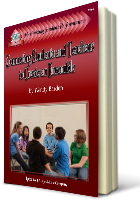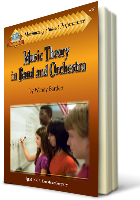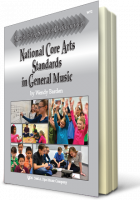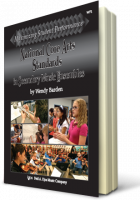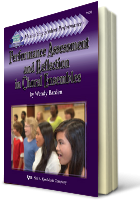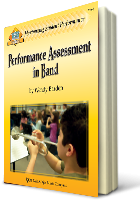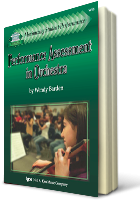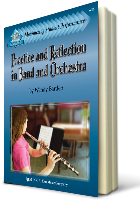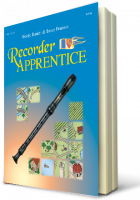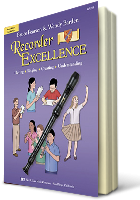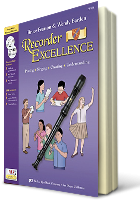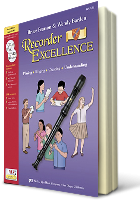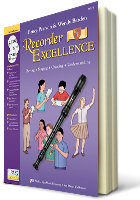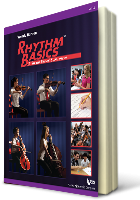Listen and respond to music with "bell ringers"
There’s the bell! Rehearsal should be starting, but there are still five students gathered around you, each with something that seems to need immediate attention. Many teachers have been able to create a few minutes to respond to these needs and others with “bell ringers”—brief activities that get the group focused on learning right away without you. Most effective bell ringers are more than busy work. Yes, they could involve practice on music theory concepts, or reviewing something from yesterday’s rehearsal, but there’s more!
Another focus of bell ringers can be listening and responding to music, and here are seven ideas to spark your thinking. In every case, students could respond to the prompts on a worksheet that you collect, using personal technology to submit their response electronically, or in a small journal/packet they keep in their folder and you collect periodically. While you will likely not grade each response, their observations serve as good formative information in determining next steps in your instruction. Have students briefly share their observations with a neighbor or discuss them as a full group, then move on to warm-ups.
- Play an audio example, familiar or unknown, and have students respond to two questions you have posted: a) What mood does the music convey or how does the music make you feel? and b) What about the music makes it sound that way? I expect at least two sentences to answer each question. The first sentence states their answer, and the second sentence provides supporting detail and further explanation (“because…”). This strategy can gently introduce students to structured listening and musical elements, especially at the beginning of the year.
- Play an audio excerpt of a piece/song with a musical element that changes frequently, such as dynamics or tempo. Have students draw a timeline or map out how this element changes through the excerpt. They should add as much detail as possible to their map to describe the points of change. I try to use a one-minute excerpt and play it at least three times. Is there a piece in their folder that has changes in dynamics or tempo, too? What might composers have intended with these changes?
- Play an audio excerpt—or multiple excerpts—and have students identify the meter. Is it duple meter, triple meter, or something else? Is it consistent through the excerpt or does it change?
- Play an audio excerpt and have students listen to and describe a specific element such as articulation or tone. Again, I expect at least two sentences, maybe more, so there is some detail in their response. This could help to establish a shared understanding of a genre, style, or performance skill you’ll be working on later in the rehearsal.
- Play a recording of an excerpt from yesterday’s rehearsal. No writing today and leave the folders closed—just listen. Have students discuss their observations with a neighbor. Then, play the recording again and have them take out their music to follow along. Now what do they notice, and what could be done to improve the performance? Before you work on this piece in rehearsal, give students 60 seconds to practice their part relative to what they heard in the recording.
- Bring in a recording of a piece you’re working on that is performed by a different ensemble. Have students respond to two questions: a) What do you notice? and b) Do you hear anything in their interpretation that we should consider for ours? If this is a video example, you may want to leave the projector off so students aren’t distracted by what they see.
- Are you singing a madrigal or playing a piece by Bach or even John Williams? Play an unfamiliar excerpt from the same historical period or composer and have students respond to two questions: a) In what time period do you think this originated or who might be the composer? and b) What about the music makes you say that? Instead of historical period, you could apply the same process to a world music example.
Yes, and… These bell ringer ideas can help students develop listening skills and musical understanding, a few minutes at a time. These are skills that can help them take their ensemble performance from a good one, to one that’s more musically expressive. And, looking beyond their high school years, students are developing musical skills they will use the rest of their lives.
Are you familiar with the new National Core Arts Standards in music? These bell ringer ideas are realistic examples of how you might regularly incorporate standards 7 and 8 (part of the artistic process of Responding to music). Check out the resources below for more information and implementation strategies on our new standards.
Thanks for pausing with me for a few minutes in your busy week. Have a good one!
____________________
Barden, Wendy. National Core Arts Standards in General Music. San Diego: Kjos Music Press (2015).
Barden, Wendy. National Core Arts Standards in Secondary Music Ensembles. San Diego: Kjos Music Press (2014).
State Education Agency Directors of Arts Education. National Core Arts Standards. Dover, DE: State Education Agency Directors of Arts Education, on behalf of the National Coalition for Core Arts Standards (2014).



